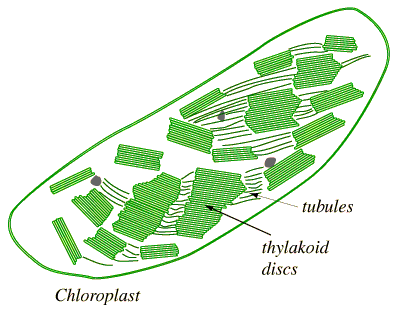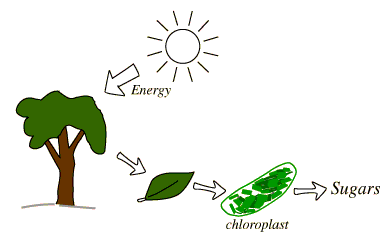Chloroplasts

Plants use energy from the sun in tiny energy factories called chloroplasts. Using chlorophyll in the process called photosynthesis, they convert the sun's energy into storable form in ordered sugar molecules such as glucose. In this way, carbon dioxide from the air and water from the soil in a more disordered state are combined to form the more ordered sugar molecules.
The simplified sketch of the chloroplast was made from an electron micrograph of a chloroplast from a higher order plant (Levy). Inside the chloroplasts are stacks of discs called thylakoids. They are compared to stacks of coins within the walls of the chloroplast, and they act to trap the energy from sunlight. The stacks of thylakoids are called grana. They are connected with an extensive sytem of tubules. The membranes of the grana contain smaller granules or particles called quantasomes which are composed to the pigments and other molecules which perform photosynthesis.
Order can be produced with an expenditure of energy, and the order associated with life on the earth is produced with the aid of energy from the sun.

| Qualitative statements of the Second Law of Thermodynamics |
| Order from disorder in biological systems |
| Energy cycle in living things |
Second law concepts
Reference
Levy
Ch 4
| HyperPhysics***** Thermodynamics ***** Biology | R Nave |